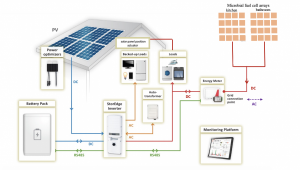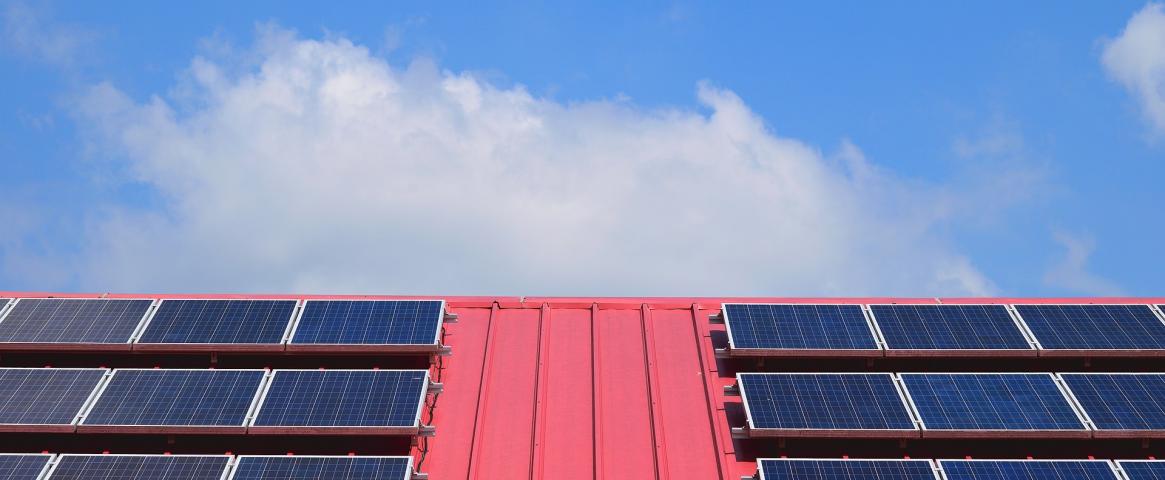By Saugat Bolakhe

The approach “rethinks the fundamentals of our contemporary urban lifestyle,” says Rachel Armstrong, a professor of experimental architecture at Newcastle University, who led the project. “Living Architecture will not only help us adapt to the changing climate,” she says, “but simultaneously aligns our behavior to be close to nature and lower our carbon footprint.”
The system Armstrong and colleagues developed capitalizes on the microbial processes within household waste to produce what she calls a “regenerative system of the household.” She presented the team’s results on February 11th at the annual meeting of the American Association for Advancement of Science.
The worsening global climate emergency has left societies scrambling to put energy-efficient practices into more widespread use. One important but sometimes overlooked contributor to the crisis is household energy usage. Buildings account for about 40% of the world’s total carbon footprint — a little more than what’s accounted by transportation.
Creating more energy-efficient homes, Armstrong says, means rethinking the dominant understanding of cities as “energy-hungry eternal structures.”
Working with colleagues at the University of the West of England, in Bristol, Armstrong set out to design an off-grid home that uses, as its “feedstock,” household wastes including toilet and greywater, phosphates from detergents, and pollutants circulating in the air. The result of their efforts is a freestanding wall, about the size of a large bookcase, that can be installed in a kitchen or bathroom and connected with the home’s plumbing system.
The wall is made of up stacked “bricks,” each of which supports different kinds of microbes and has a different job. As liquid wastes pass through the wall’s chambers in sequence, microbial actions produce bioelectricity, fertilizers, reusable water and breathable fresh air. The system is analogous to the gut of a cow, in which food is processed sequentially in different chambers.
The centerpiece of Living Architecture is its array of microbial fuel cells, a kind of battery powered by organic waste. These cells take in urine and other wastewater and feed it to bacteria within the cell.
Other “bricks” in the system contain pools of green algae that trap sunlight and carbon dioxide, converting it to oxygen and biomass that can, in turn, again be used to generate electricity. And still other bioreactors in the Living Architecture wall use genetically modified microbes to help reclaim phosphates from detergents and scrub nitrous gas pollutants from room air.
The Living Architecture prototype also incorporates biosensors — themselves powered by the microbial fuel cells — that monitor microbial activity and provide feedback to users about how “happy” the microbes are. Users interact with the system through an augmented-reality display and can adjust the system’s settings as needed.
Armstrong considers the prototype a proof of principle that biological infrastructure can be fully integrated into homes of the future. Going from principle to living reality will demand that societies commit to a radical shift, notes Chris Rogers, a professor of geotechnical engineering at the University of Birmingham. To truly build livable, sustainable and resilient homes of the future, systems such as Armstrong and colleagues’ depend on parallel investments in technologies that make it possible to retrofit existing buildings.
Saugat Bolakhe is a freelance science journalist and a graduate in Zoology based in Kathmandu, Nepal. He is interested in topics including conservation biology, climate change and evolutionary biology. Follow him on Twitter @saugat_optimist or email him at saugatbol@gmail.com.
This story was edited by NASW member Siri Carpenter, who served as Bolakhe's mentor during the NASW-AAAS Spring Virtual Mentoring Program.
Hero image by Narupon Promvichai from Pixabay

